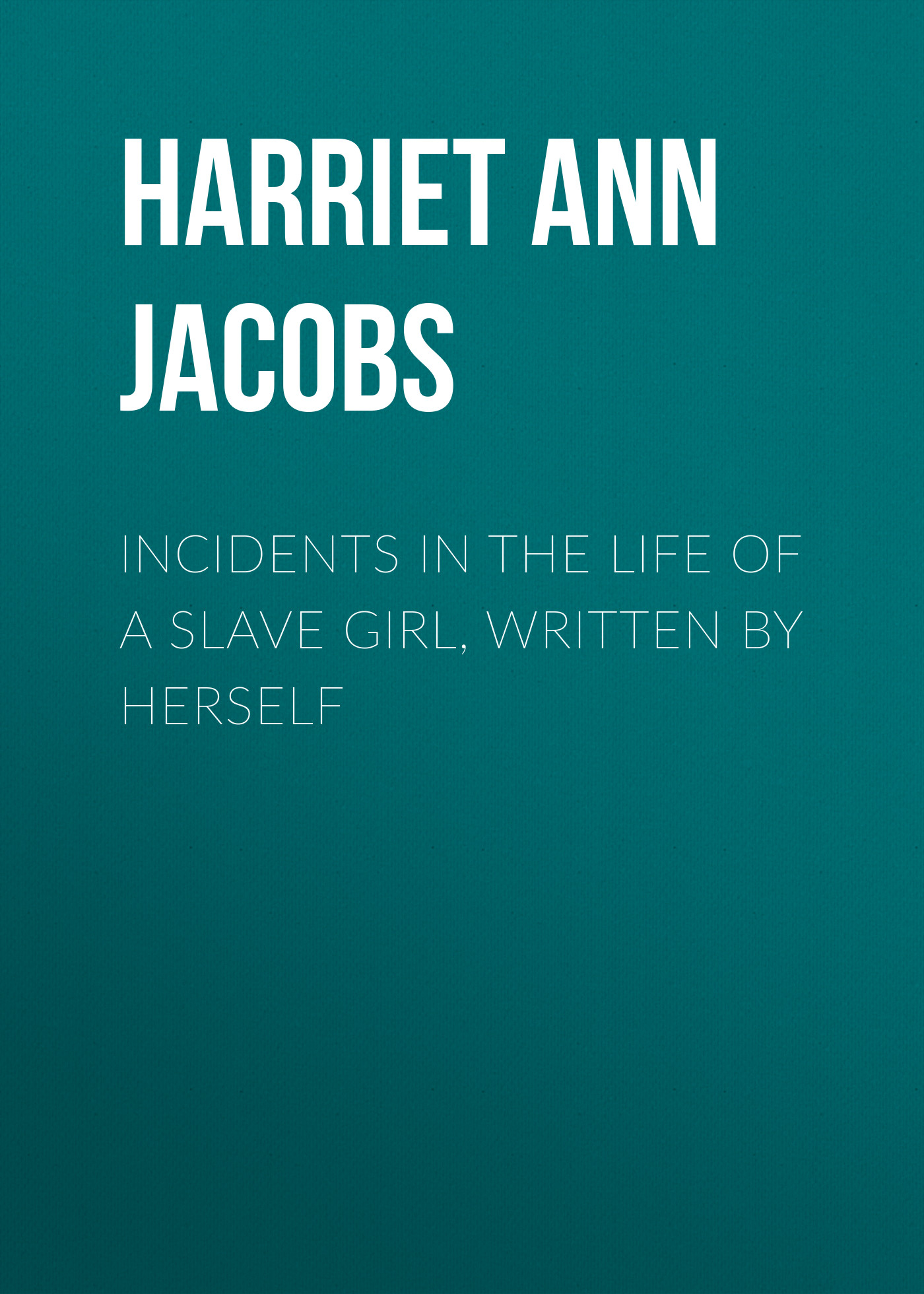Электронная книга: Harriet Ann Jacobs «Incidents in the Life of a Slave Girl, Written by Herself»

|
Издательство: "Public Domain"
электронная книга Скачать бесплатно на Litres |
Harriet Ann Jacobs
Harriet Ann Jacobs (
Biography
Harriet Jacobs was born a slave in
In 1825, Margaret Horniblow died and
By 1835 her domestic situation had become unbearable, and Harriet managed to escape. She lived for seven years in a small crawlspace in her grandmother's attic before escaping by boat to
"Incidents in the Life of a Slave Girl"
Jacobs began composing "Incidents in the Life of a Slave Girl" while living and working at Idlewild, Willis's home on the
Boston publishing house Phillips and Samson agreed to print the work in book-form — if Jacobs could convince Willis or The narrative was designed to appeal to She criticized the religion of the Much of "Incidents in the Life of a Slave Girl" is devoted to the Jacobs' struggle to free her two children after she runs away herself. In one heart-rending scene, Harriet spends seven years hiding in a tiny space built into her grandmother's barn in order to occasionally see and hear the voices of her children. Jacobs changed the names of all characters in the novel, including her own, to conceal their true identities. Despite documents of authenticity, many have accused the narrative of being based on false accounts. The Jacobs's correspondence with Child reveals her enthusiasm over the Later life Jacobs lived the later years of her life in Notes References *Shockley, Ann Allen. "Afro-American Women Writers 1746-1933: An Anthology and Critical Guide", New Haven, Connecticut: Meridian Books, 1989. ISBN 0-452-00981-2 External links * [http://college.hmco.com/english/heath/syllabuild/iguide/jacobs.html Harriet Ann Jacobs (1813-1897)] Источник: Harriet Ann Jacobs
*Yellin, Jean Fagan. "Harriet Jacobs: A Life". Cambridge, Massachusetts: Basic Civitas Books, 2004. ISBN 0465092888
*
* [http://essays.quotidiana.org/jacobs/ Essays by Harriet Jacobs at Quotidiana.org]
Другие книги схожей тематики:
| Автор | Книга | Описание | Год | Цена | Тип книги |
|---|---|---|---|---|---|
| Harriet Ann Jacobs | Incidents in the Life of a Slave Girl, Written by Herself | — Public Domain, электронная книга Подробнее... | электронная книга |
См. также в других словарях:
slave narrative — Account of the life, or a major portion of the life, of a fugitive or former slave, either written or orally related by the slave himself or herself. A Narrative of the Uncommon Sufferings and Surprising Deliverance of Briton Hammon, a Negro Man… … Universalium
I Know Why the Caged Bird Sings — infobox Book name = I Know Why the Caged Bird Sings orig title = translator = author = Maya Angelou cover artist = country = United States language = English series = genre = Autobiography publisher = Random House release date = 1969 media type … Wikipedia
The Belgariad — is a five book fantasy epic written by David Eddings. The series tells the story of the recovery of the Orb of Aldur and coming of age of Garion, an orphaned farmboy. Garion is accompanied by his aunt Polgara and grandfather Belgarath as they try … Wikipedia
Harriet Jacobs — Pour les articles homonymes, voir Jacobs. Harriet Ann Jacobs, née en 1813 et décédée le 7 mars 1897, est une écrivain américaine, militante active pour l abolition de l esclavage. Harriet Jacobs est une ancienne esclave afro américaine née à… … Wikipédia en Français
Characters in the Deltora Quest series — The Deltora series features a wide line of characters, both important and minor. The series also features many different monsters and creatures that appeared in all of the many different books. This article is a list of the many different… … Wikipedia
African American literature — ▪ literature Introduction body of literature written by Americans of African descent. Beginning in the pre Revolutionary War period, African American writers have engaged in a creative, if often contentious, dialogue with American letters.… … Universalium
